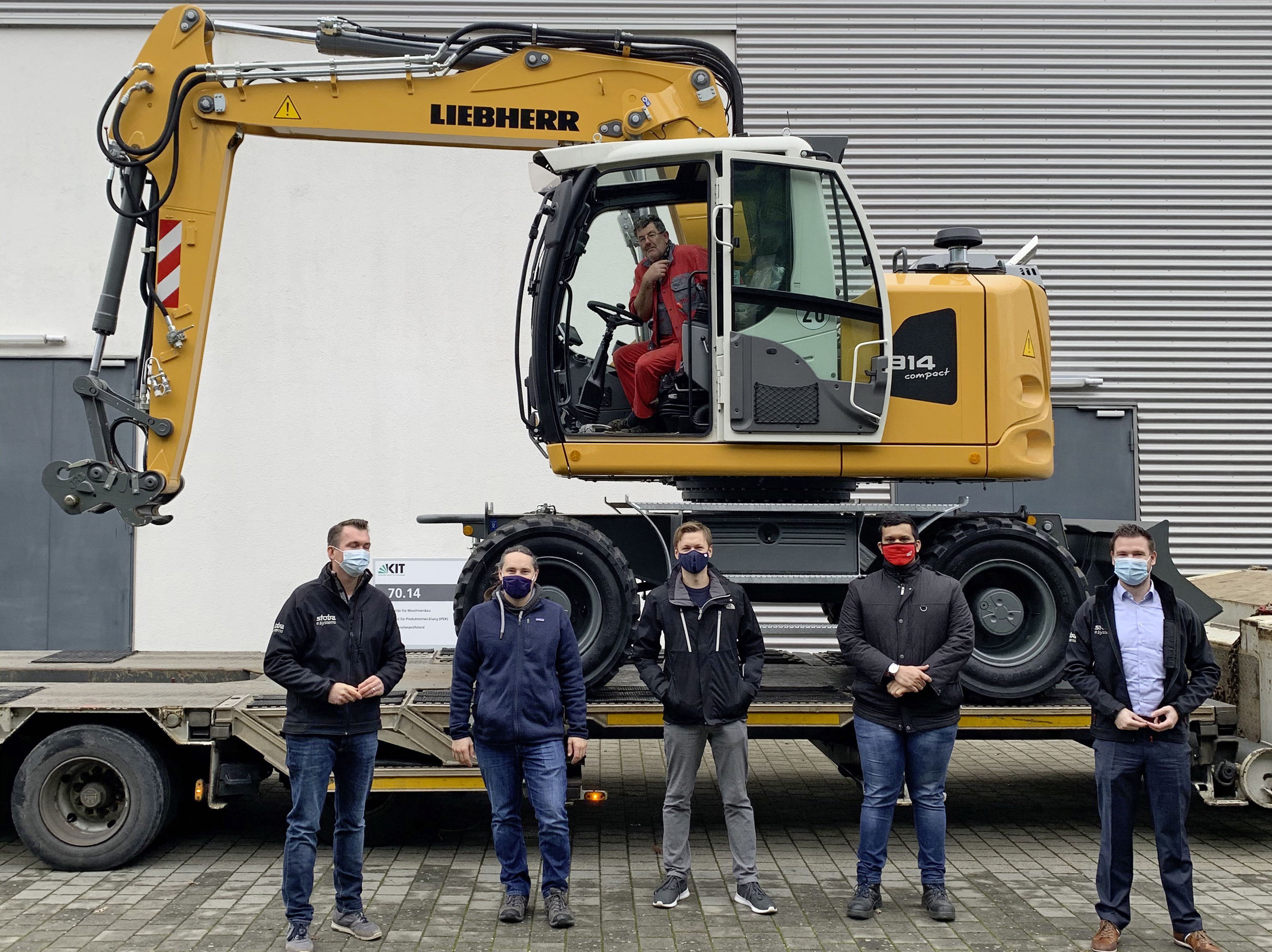Research into hybridisation measures using the example of a hydraulic excavator
- Contact:
- Funding:
Ministerium für Wirtschaft, Arbeit und Tourismus Baden-Württemberg
- Partner:
stoba e-Systems GmbH
- Startdate:
01.12.2020
- Enddate:
31.12.2021
Latest news
As part of the launch of the project, Prof. Dr Marcus Geimer and Mr Karsten Trautmann from stoba e-Systems GmbH were interviewed on the topic of ‘Potential of hybrid drives for work machines’ and the new research project. The complete interview can be downloaded under Downloads.
Project description
The aim of the research project is to investigate the effectiveness of various hybridisation measures known from the state of the art and research using the example of a hydraulic excavator. To this end, all known hybridisation measures suitable for excavators will first be researched and evaluated. At the same time, a test vehicle, a mobile excavator type A914 from Liebherr, is equipped with extensive measurement technology. The test vehicle is then operated by several professional drivers in typical excavator operations and the corresponding measurement data is recorded. Statistically verified reference cycles are derived from this measurement data, which can be used to evaluate the effectiveness of possible hybridisation measures.
In the next step, an overall simulation model of the test vehicle (hydraulics, MBS) is created and parameterised. At the same time, suitable hybridisation measures are determined and selected by computational analysis of the reference cycles, and suitable evaluation criteria (e.g. performance, efficiency increase) are defined. The model of the test vehicle is then extended to include the suitable hybridisation approaches and subjected to various simulations using the available reference cycles. Combinations of the individual hybridisation approaches are also examined. The aim of this step is to identify an optimum hybridisation structure for the individual reference activities and an optimum hybridisation structure for the mapped activity portfolio of the test vehicle. Depending on the requirements, the hybridisation structure is optimised and further developed so that a final recommendation can be made as to which hybridisation approach offers the greatest potential for the individual activities and for the overall machine with regard to the previously defined evaluation criteria. The project concludes with a detailed documentation of the results found and methods developed.

Funding
The project ‘Research into hybridisation measures using the example of a hydraulic excavator’ is funded by the Baden-Württemberg Ministry of Economic Affairs, Labour and Housing with funds from the Baden-Württemberg state budget.
